As an attorney, you want to make sure the clients who need your legal services can find you online. You know that SEO matters. But how do SEO rankings work? And what can you do to get your law firm’s website in front of all the clients who are actively searching for you online right now?
Clients usually look for a lawyer because they have a very specific legal need. The majority search online, entering issue-specific keywords into a search engine like Google or Bing, and want to find a law firm in their area. Most people only contact the law firms in the top three listings on the first search results page.
Want to make sure your law firm’s website ranks high on searches that are relevant to your legal specialties? This article will show you how.
What’s behind SEO rankings?
The goal of SEO is to get your website as close as possible to the top of the first page of search engine results pages (SERP). The goal of a search engine is to help people find what they seek when they use specific search terms.
When you provide unique and relevant content that satisfies the intent behind respective searches, search engines reward your web pages and website with higher SERP rankings.
The Role of Algorithms
Search engines use algorithms that measure performance across a variety of metrics, including click-through rates and the amount of time visitors spend on web pages. The more people click on links to particular web pages and the longer they stay on those pages, the better the algorithms rank those pages. Higher click-through rates and longer page visits help algorithms affirm that a given web page is satisfying the intent behind a specific search.
Search engines continually update their algorithms to help ensure the SERP rankings only reward websites and web pages that truly satisfy a visitor’s search intent. These updates help prevent lower-quality sites from “gaming the system.” For example, if someone searches for State Farm Insurance quotes, the search engines don’t want that person to have to sift through a lot of affiliate marketing sites that could interfere with that user from achieving their intention to find a local State Farm agency.
Google currently uses what it calls an EEAT quality rating guideline, which stands for:
- Experience
- Expertise
- Authoritativeness
- Trustworthiness
The longer your website has existed and the better it details your law firm’s specific areas of legal services in your market area, the more likely the algorithm will give it a high rating. This translates to a greater likelihood that you will show up high in the SERP rankings.
In other words, the better your law firm website’s EEAT rating, the higher your SEO rankings.
Pro Tip: When you publish original content on your website, it helps demonstrate your law firm’s experience and expertise, which also leads to a sense of authoritativeness and trustworthiness among both your prospective clients and Google’s algorithm.
SEO Ranking Factors
The better the SERP rankings, the more people visit your law firm’s website, which means more potential clients for your legal services. So what are the ranking factors that make web pages and websites earn better SEO rankings in Google?
These factors include:
- On-Page Content – Websites that use high-quality content are ranked higher than others. Search engines love to see content that is unique and relevant to consumers’ intent. The more unique and relevant, the higher the rating and the better the placement on search results. Content that replicates other web pages or outright plagiarizes them, though, could cause Google to delist your website, which would be a marketing disaster.
- Hyperlinks – Hyperlinks are clickable text that link to relevant information that is published on other websites. These can include links between web pages within your website and links that direct users from your website to web pages outside your website. Search engines also favor your website based on the number of backlinks from other websites to your site.
- Authorities for Page Content – Your on-page content should include hyperlinks to authoritative sources that are relevant to the keywords for which you are trying to earn high SERP rankings. For example, you could link to the National Highway Traffic Safety Administration or the Insurance Institute for Highway Safety when referencing car collision statistics. You might link to your respective state legislature when discussing the statute of limitations for a personal injury case or other legal matters to help localize your content.
- Mobile-Friendly – There are more mobile devices today than desktops. There is a high probability that your next client will view your website through a mobile device. If you want your website to rank high, it must be optimized for cell phones, tablets, and other mobile devices.
- Internal Website Structure – Your website should be well-organized for users and search engines alike. Your website can incorporate internal hyperlinks and URL structures that enhance internal order. URL structures are the way to maintain consistency across the pages of your site and include a protocol, domain name, and path. For instance: example.com/category/webpage.html.
- Load Performance / Speed – Load speed and load performance are very similar, but not the same thing. Load performance is a technical measure of resource optimization, while load speed refers to the page elements that are loaded on the viewing side and how long it takes them to appear.
You can do a little research into best practices for Google’s PageSpeed Insights and Core Web Vitals. These two resources present more or less the same thing, but Core Web Vitals is measured through Google Search Console- Speed: The performance of your hosting or internal hardware.
- Optimized Resources: Rendering web page content efficiently and with a minimalistic approach. Content must be rendered first, then additional web page elements can follow.
- Web Page Elements – For a satisfying user experience each web page should contain not only text, but also formatting that makes that textual content easy to read and digest such as subheadings, bullet points, links, and multimedia elements.
Commonly used web page elements include:
Links Paragraphs Headings Images Tables Numbered Lists Bulleted Lists Regions The web elements help to make a web page and its content much easier to navigate while enabling visitors to quickly scan and access the information that they seek. Using a variety of web page elements creates a much better user experience and keeps visitors on your website much longer, which helps improve SEO rankings.
Types of SEO Rankings
Search rankings generally break down into two common types: SERP rankings and local pack rankings. The main difference is about how users go about searching for the legal services your law firm provides.
Here’s a closer look at both.- Standard SERP Rankings – A SERP is essential to search engine optimization because the higher the ranking on the first SERP page, the more people tend to click on it. The goal of SEO is to get your website as close to the top of the results page as possible because about 60 percent of consumers contact law firms that appear among the top-three search results.
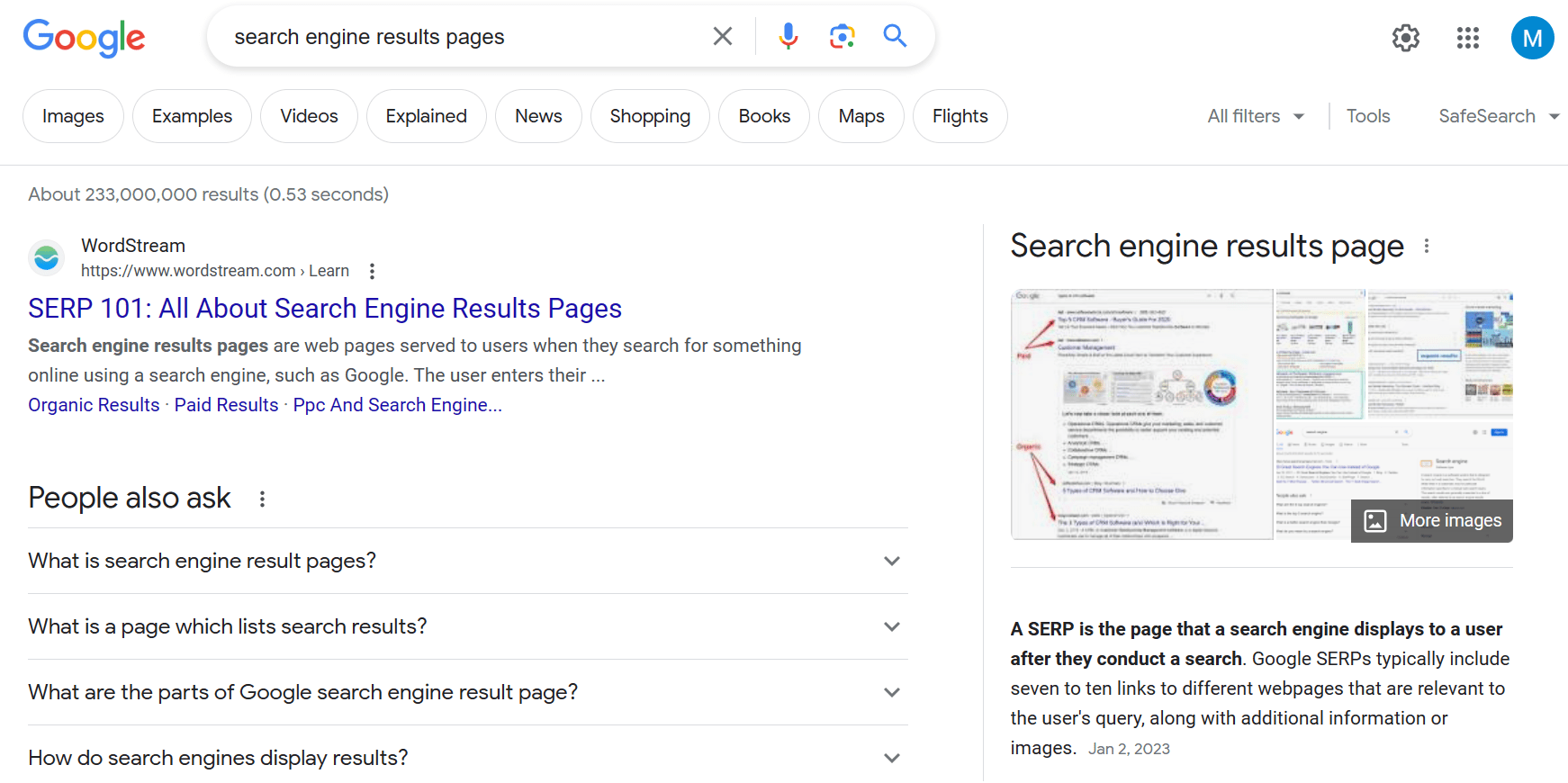
- Local Pack Rankings – Many search engines, including Google, display certain search results when a user searches a map. For instance, if you type in “family lawyer near me” in Google Maps and you live in Santa Clarita, Google will display specific law firms in that region. This screenshot shows what a local pack ranking looks like on a user’s screen:
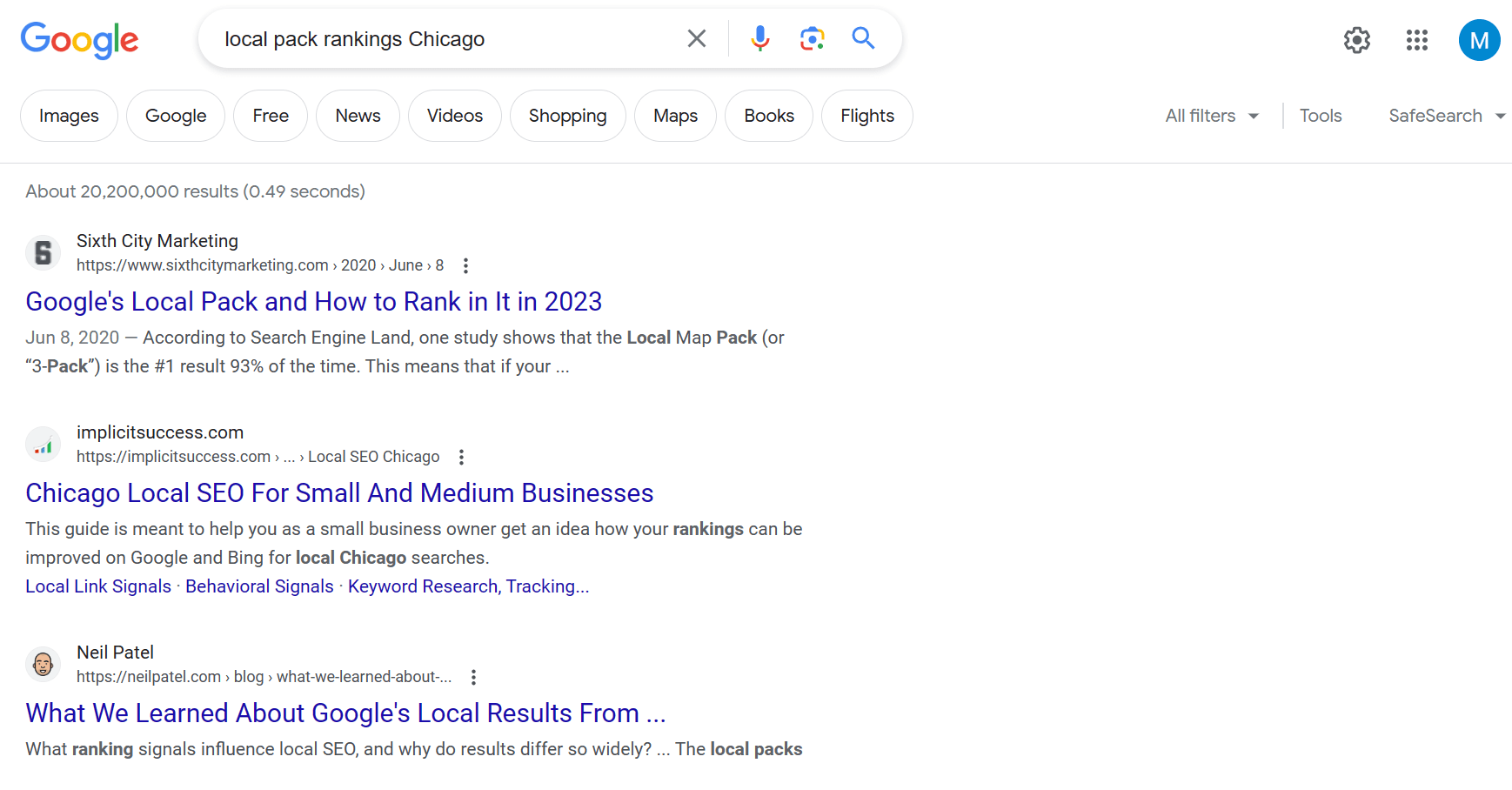
How to Assess Ranking Report Data
While search engines do involve human technicians, companies like Google mostly rely on machine algorithms to process the trillions of data points they constantly receive. Google calls its machine-learning AI algorithm “RankBrain.”
RankBrain helps Google find the most relevant pages for a search query. Think of it as a proprietary score based on a set of metrics such as click-through rate, bounce rate, and time on site. RankBrain uses metrics like these to determine the most relevant website for each set of search inputs (that is, keywords and user intent).
Here’s how:
- The click-through rate is a measure of how often people click on the link to a web page when it appears in search results for a particular keyword. A good click-through rate suggests the web page has greater relevance to the search input that yielded that result.
- The bounce rate measures the percentage of visitors who click through to the web page but leave after viewing just that single page instead of exploring more pages on the website. If a page’s bounce rate rises over time, it suggests the page lacks relevance to the search inputs that yielded that result.
- Time on site is a measure of how long visitors stay on the website as a whole, after clicking a link provided by specific search terms. Both Google and Bing algorithms can measure the time from when a visitor clicks on a link to your site until that visitor leaves. The longer a visitor stays, the more relevant that web page is considered, and the algorithm will reward that page with higher rankings for that search term in the future.
Focus on Long-Term Performance
Google and other search engines really love websites that have been around for many years and have lots of pages that contain unique and relevant content. The older a website is, the more insulated it becomes against the continual algorithm updates that are designed to reward quality websites and punish the pretenders. For that reason, long-term performance matters greatly when you want to get the best possible SEO results.
Every web page and website that Google ranks for SERP purposes is indexed. The more web pages that Google recognizes and indexes, the higher the overall ratings for the website and its respective web pages. So it’s important to update your law firm’s website with new and unique content to increase the number of indexed web pages.
If you were to create a simple splash page in hopes of ranking high for a particular search term, it would not earn a good SERP rating. Instead, Google might not index that page at all and could punish your website if it relied on quickly-produced splash pages that lack unique content.
Likewise, if Google determines some of your site’s content is plagiarized or otherwise closely resembles content on other websites, the search engine might delist the entire website, which would stop your online marketing in its tracks.
Monitor Organic Search Rankings
There are two types of search results:
- Paid: You bid on a particular keyword and pay search engine fees whenever someone uses that keyword to find a link to your site and click on it.
- Organic: Costs you nothing, because search engine crawlers have indexed a page on your site as relevant to specific search terms and therefore provided a high SERP rating.
You can use tools like SEMrush to see organic rankings over time. Just enter the URL for a website, and the tool will create a report that shows which keywords are producing online traffic for your website or for competing websites.
SEMrush can show you which competitors are drawing traffic from specific search terms and their respective SERP ratings. This information will help you determine what kinds of new content you can add to your website to better compete for new clients.
Once you generate that keyword ranking data, here are some tips on how to more easily understand how your website/webpage ranks:
Step 1: Create a position-tracking campaign for a particular website on SEMrush.
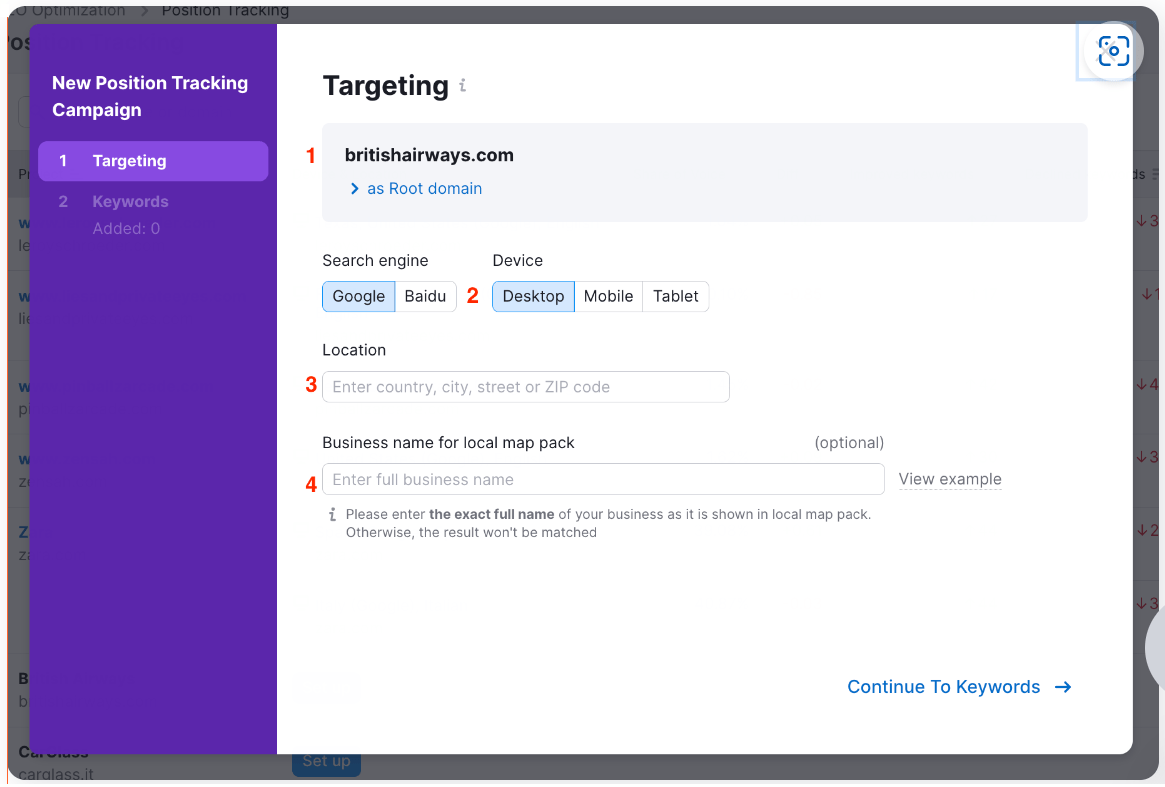
You can choose the scope, which could be your entire website by entering the root domain or a specific web page by entering a subdomain, URL, or subfolder.
Step 2: Choose the types of devices that you want to track. Your options are desktops, mobile phones, and tablets. Desktop refers to online devices while mobile phones and tablets are mobile devices.
Step 3: Enter your location data, which could be the country, city, street, or zip code.
Step 4: Filter by keywords only containing your location or your category of law to see individual or small-scale patterns in keyword ranking changes.
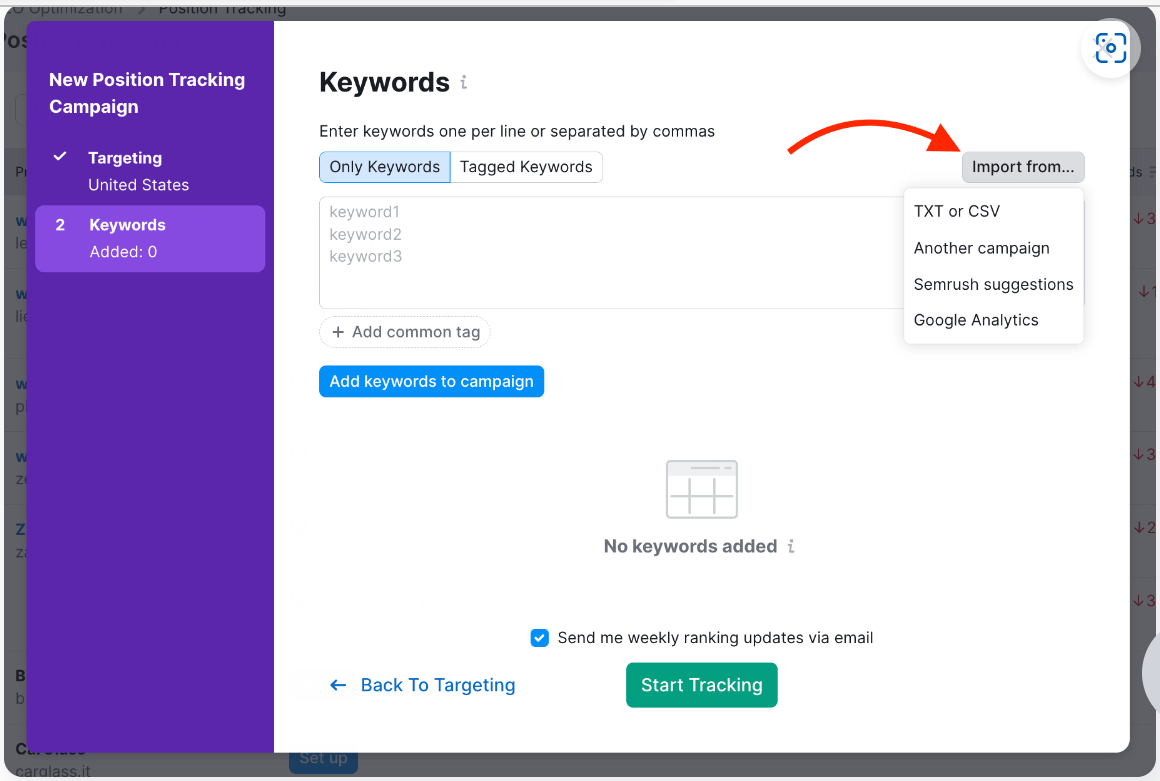
Step 5: Add your competitors so that you can compare your rankings with theirs.

Step 6: Download position tracking reports from SEMrush to compare your website’s performance with your competitors.
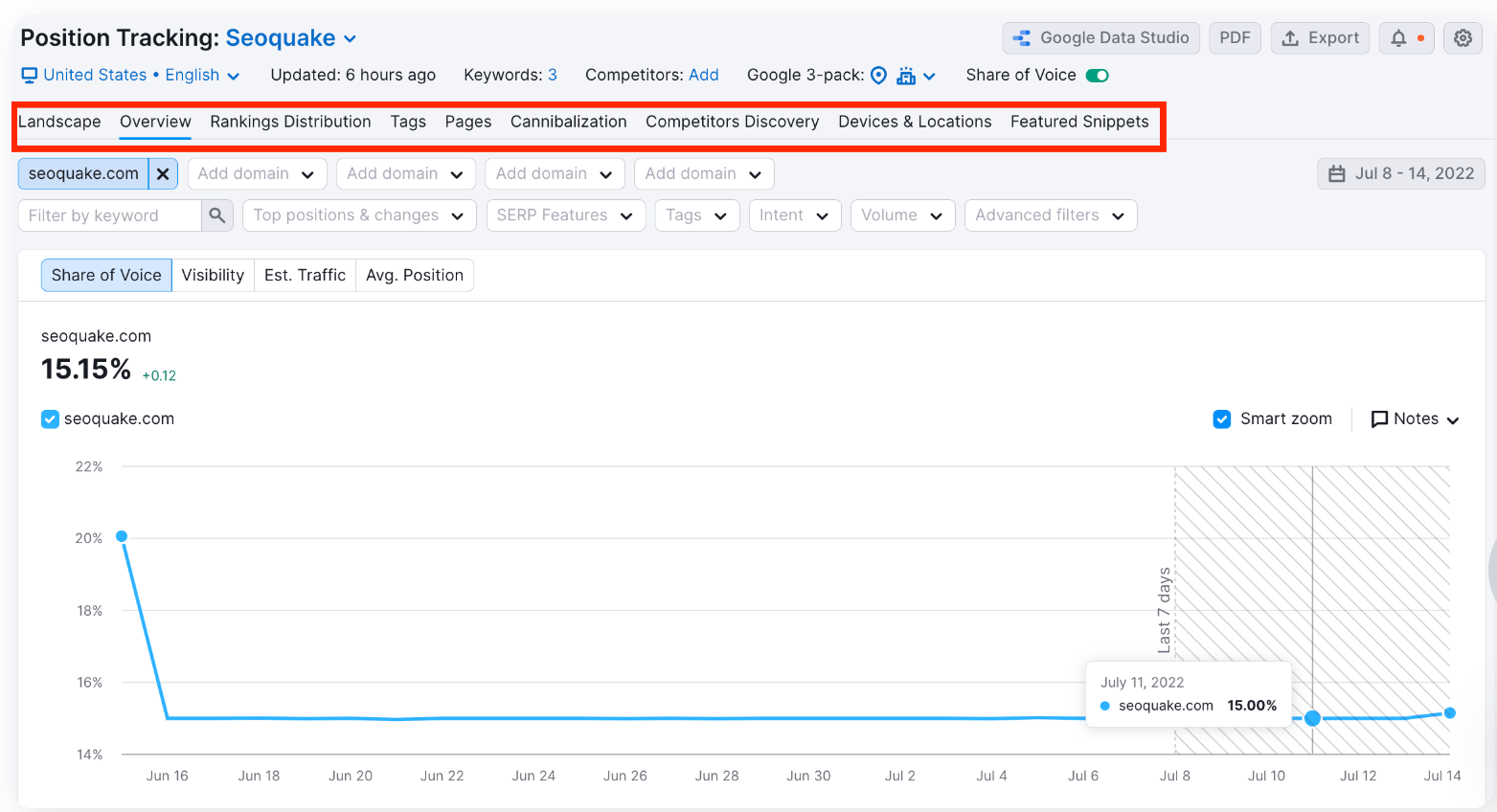
Troubleshooting Poor SEO Rankings
Poor SEO rankings don’t have to be permanent. To initiate quality-improvement measures, you can investigate why your website is floundering and turn that trend around. But keep in mind that it takes 6-12 months to improve SEO rankings and see measurable results that confirm your efforts are paying off. If you’re trying to rank for very competitive keywords, it could take several years to see improvement. But it is still possible.
Here are several things you can check to learn why your website may not be performing well:
- SEO Best Practices: You should use standard SEO best practices to obtain the best results. Setup back links magnets, organize your website, and focus on the best keywords for your practice. If you don’t follow SEO best practices, you may lose ground to websites that follow these standards.
- Content Quality: Your website’s performance may also suffer if the quality of your content is subpar. If your website’s content is overly stuffed with keywords, too thin, or poorly formatted, search engines may lower its ranking. Conversely, well-written and well-organized content will increase your website’s ranking.
- Load Times: Your website may not be performing well if it is having technical issues. If your website has high load times, dead links, or other issues, it will not do as well as websites that do not have the same issues. Google uses consistent up-time for a domain as an overall ranking factor, too.
How to Improve Your SEO Rankings
Nothing is more frustrating than putting in many hours of work and still not seeing positive results for your efforts. If you follow all these suggestions and don’t see your website placing higher on search engine result pages after six months, we recommend you perform a competitive analysis to better understand why the current top-ranking web pages in the SERP have earned that position.
Here’s how to use SEMrush to perform a competitive analysis:
Step 1: Use to the Organic Research tool inside SEMrush to enter your website’s domain and find your competitors.

Step 2: Go to the Main Organic Competitors report section to see which websites compete for the same keywords that you use to promote your website.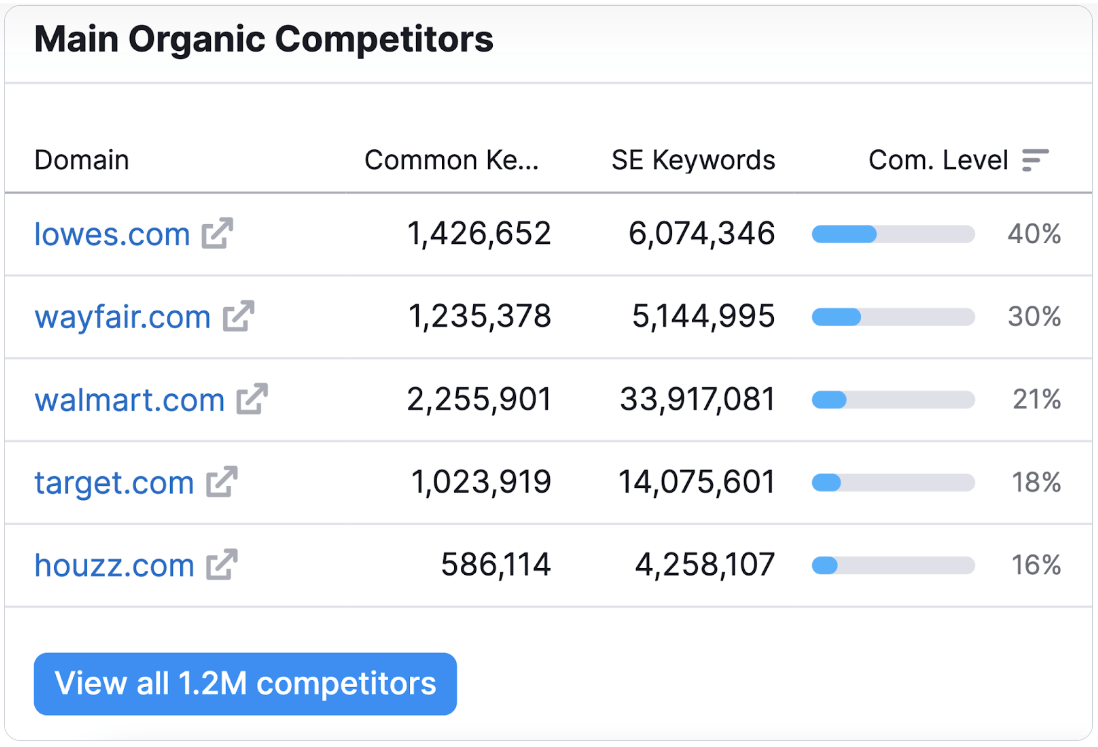
Step 3: Click on “View All Competitors” to see a complete list.
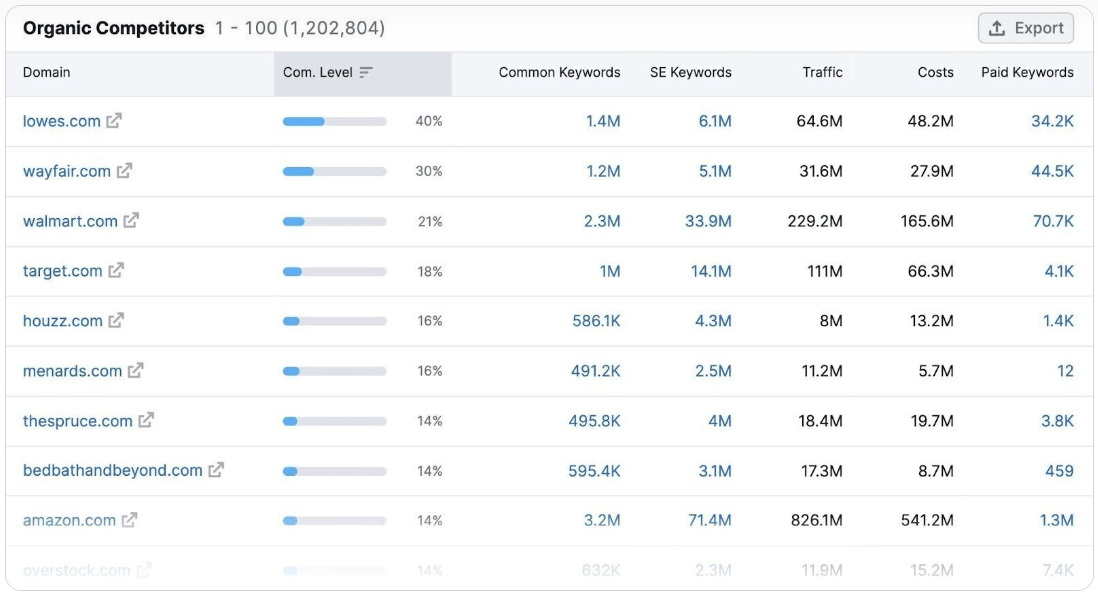
Step 4: Enter your domain and the domains of up to four competitors, then click the “compare” button to generate a report.
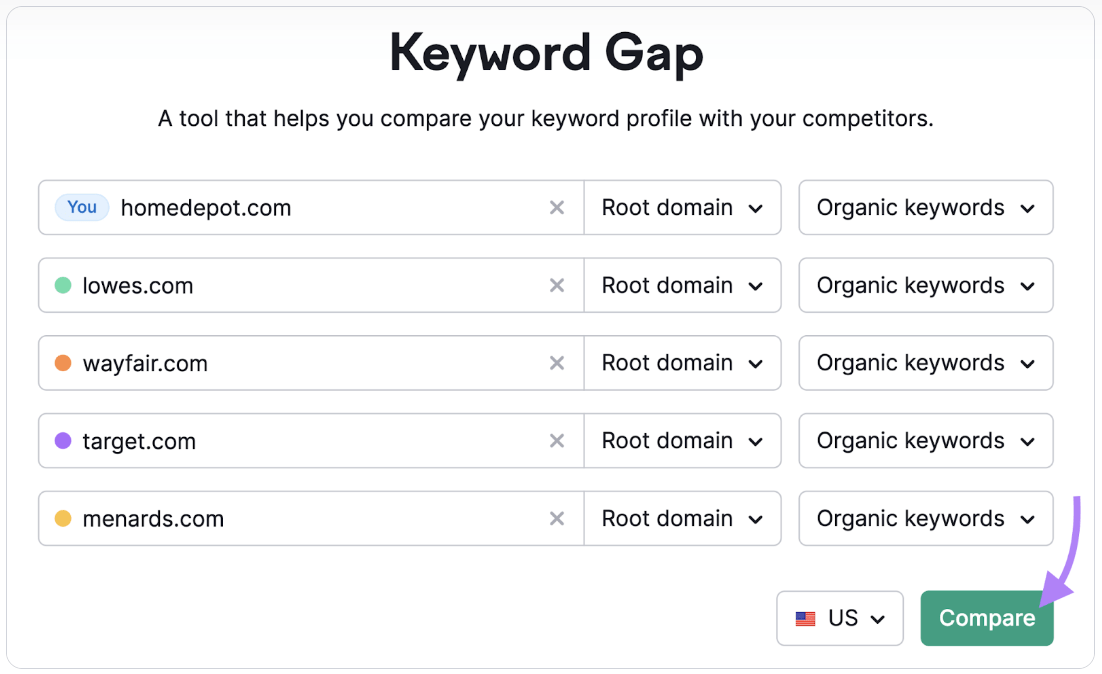
Step 5: Click the “Missing” tab to learn which keywords your competitors are using that you are not.
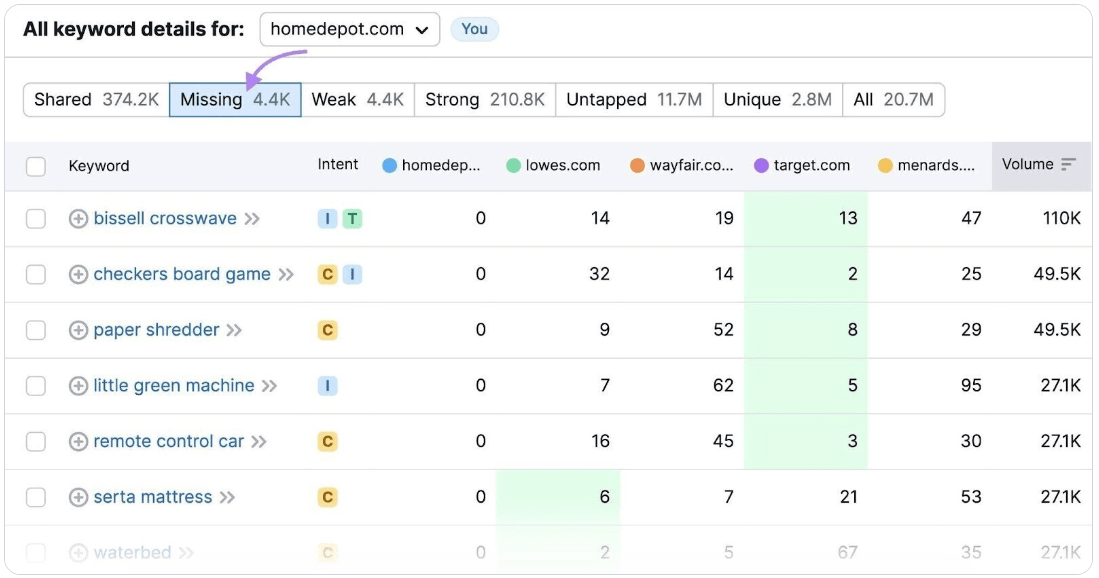
This will allow you to see commonalities and outlying factors and help you better understand why the current top-ranking web pages in the SERP have earned that position.
You follow a similar process with other SEMrush tools to compare additional data, such as load times for competing web pages, types of content on those pages, quality links, and much more. Where you find differences between your website and the top-ranked websites, you can mimic and improve upon that element to close the gap between your website and the higher-ranked websites.
Experienced marketers regularly measure and track performance in this way.
You could hire dedicated staff to handle your law firm’s online marketing and SEO, but that gets costly fast. And few people are well-versed enough in the areas of both marketing and legal practice.
Another solution is to leverage the expertise LegalMatch has developed over more than 20 years as the nation’s premier attorney-client matching service. But don’t take our word for it. Here are just a few of the happy attorneys for whom we’ve provided a steady stream of potential cases:
When I talk about cost benefit analysis compared to other lead generating systems that are out there, being with LegalMatch for 10 years has to say something. David Z., New York, NY, Family Law
We normally get leads several times daily from LegalMatch. It varies, but it is on a daily basis. At least 50% of those leads turn into actual paying clients. Bret D., Oklahoma City, OK, Real Estate Law
Over the course of a year, I have more than 365 leads from LegalMatch. There might be some days when it gives me multiple leads. Jason T., Salem, OR, Criminal Defense Law
LegalMatch is one of the best investments you can make in your law business because it will pay for itself. If you work it right, it will do far more than pay for itself. Teresa H., Baton Rouge, LA, Family Law
Read more LegalMatch success stories or contact us to schedule a demo and learn how you can expand your client base in a way that is cost-effective and convenient for your law firm.
Legal Leads for Lawyers
Related Articles
Get the Legal Clients You Need! - Standard SERP Rankings – A SERP is essential to search engine optimization because the higher the ranking on the first SERP page, the more people tend to click on it. The goal of SEO is to get your website as close to the top of the results page as possible because about 60 percent of consumers contact law firms that appear among the top-three search results.

